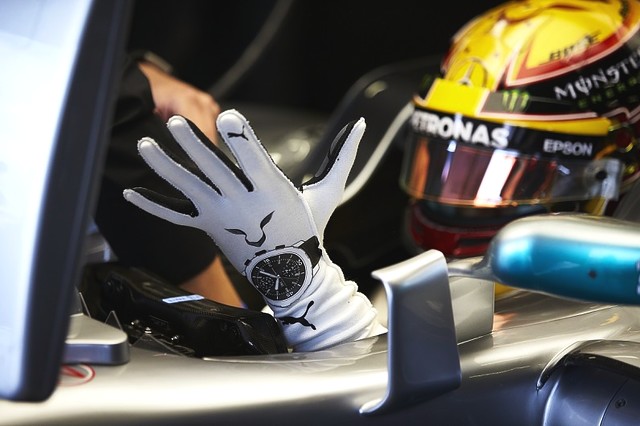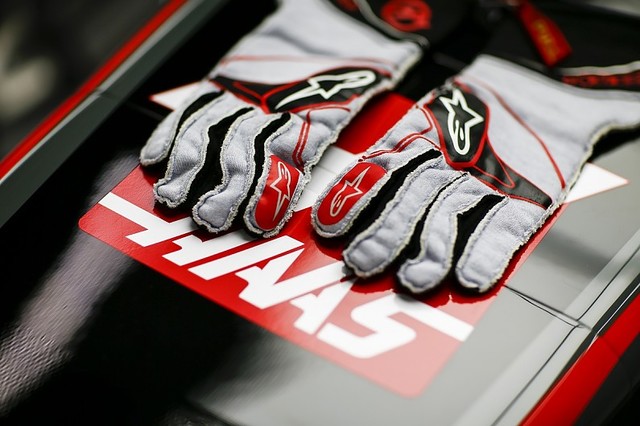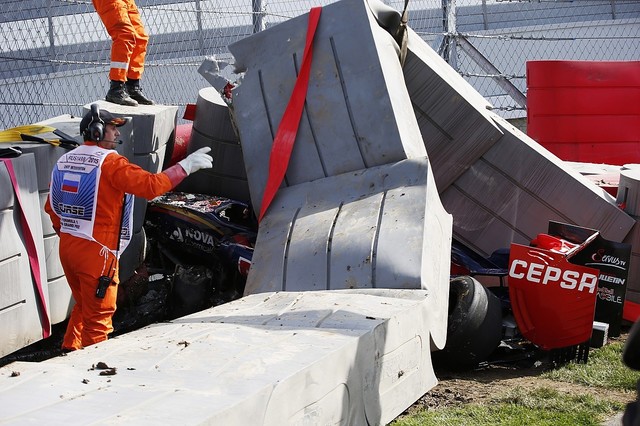Vital Signs Recognizing Gloves - a Great Innovation Neglected by the Public
During the offseason, the introduction of the Halo system became the focus of many media and fans to discuss, and the other a significant innovation about driver safety protection technology seems to escape the public glasses, it is the vital signs identifying gloves. An existence that is closely related to the driver's life does not arouse enough attention. In today's article, we're going to talk about the vital signs that will be introduced in the new season, and another important step to ensure the safety of drivers.
In the Formula One race in recent years, the organizing committee has put a lot of effort into protecting the driver's head, resulting in the emergence of the car's beauty and the controversial Halo system. And, apart from Halo, the other security innovation is also regarded equally important, and it is popular in the driver's hand, quietly that's in the 2018 season was forced into the vital signs of recognition gloves, in crisis situations, a pair of small gloves helps a lot.
New vital signs identifying gloves with a 3 mm ultra small sensor, it can be in 23g under the impact of the car accident in a timely manner to determine the vital signs of drivers, and in the 500 meters signs and signal the driver. This innovation to ensure the safety of drivers is the brainchild of Dr Ian Roberts, medical representative of the F1 Race Organising Committee, and Van der Merwe, a medical driver.
Medical vehicle drivers Van der Merwe has a fairly high racing career, he was Britain's Formula 3 championship in 2003, and in 2004 won the Formula One common reserve driver seat. In the days to come, he has helped the FIA collect as many incident samples and safety information as possible, and has been working tirelessly to promote the safety of the car. In 2018, the products developed by Van der Merwe and Dr. Ian Roberts are finally being used in the competition environment.
Over the past five or six years, the FIA has asked for a safety and rescue perspective to monitor the driver's health. In the 5, 6 years, we received a lot of advice, whether large companies or small companies, they all have a lot of good ideas, such as tattoo sensors, but in fact, the product has not only to be used for the driver, also used for all other care need to users in public.
Those concepts are either too complicated or too expensive. So Van der Merwe and Dr. Ian Roberts decided to do the research themselves and successfully tested the tension and fire performance in the Hungarian Grand Prix last season.
Under the support of the FIA and global research institutes, to strengthen safety data in recent years, under the condition of high speed monitoring equipment to application of the ear, head of the activity function of track and monitor are also possible. After studying, they finally put tiny biological sensors in the gloves, the high-tech gloves also arises at the historic moment, because the sensor is installed in the gloves for better reliability, speed and accuracy are the fastest feedback.
The human ear is very sensitive and can monitor almost every aspect of our body's functioning, so the ear is a great place to start monitoring. It was found through an accident, whether driving or racing at ordinary times, there may be more than 95% of people will pay the price, even physical pain and mental shock. But it was from then that it was found that some people really need medical attention and care, and that's what they tried to do. They are not looking at the majority of the cases mentioned above, but how much impact the driver or driver will have when a rare accident happens.
In such a serious or very special cases, the head and the driver's helmet have already completed the work, and the driver earplugs or other things connected sensor can be directly under severe impact are broken, this is why they chose the cause of the sensor on the gloves.
In the event of an accident, we believe that this is the best solution. Because this is the most direct evidence, we can understand the severity of the accident and the life signs of the driver through the feedback of the gloves, and then make follow-up plans after analysis and meeting. Because as long as you are a driver, you will always wear gloves while you are in the car.
Gloves will feedback pulse and oxygen levels in the blood, and the information such as heartbeat, blood pressure, when at least one vital signs within the range, we should be able to conclude that this is not a rare fatal accidents. Instead, we will take immediate action.
Van der Merwe cites the impact subjects of young Siennes in the 2015 Russian Grand Prix practice. He was on the front wall at 153 kilometers per hour, and then a huge wall of tires was lifted, and he was trapped in the car, and the details were unknown.
We will make decisions according to the data, rather than relying on instinct experience, when rescuers arrive there, they must make a decision, and under the rapid determination of high risk is often co-existed. With limited number of rescuers at that time, people had to move the tyre wall while also concerned about the Spaniard's physical condition, if through data feedback that his physical condition all in normal, so you can repair methodically protective wall, instead of one side wall, and pray.
Collecting real-time data from the feedback of vital signs recognition gloves is currently unique to the FIA. The team and research center can download the latest real-time data after the driver returns to the Parking Area, and contribute to the innovation and development of the gloves.
And this kind of gloves will also become the standard provision for FIA in the future, the research and development budget, the team's data update, data feedback of driver, etc. People generally accept that can make the gloves development continues, the cost will be lower and lower, we can also from a host of examples for motor racing, body gain new understanding of many aspects, such as monitoring, rescue innovation.
Numerous accidents after analysis will slowly convergence, that is, scientific research and development of itself, we already have a current system that can be applied to the official version of the game environment, and the monitor has become more and more small. Weight loss is a major event, and a whole set of equipment down to about 23 grams, this in clinical is very light, but for formula one is not enough, we want to the pursuit of excellence, 0 grams is our goal.
Although the glove was first introduced in F1 this year, the work on data collection and driver monitoring has long since begun. AVL RACING, an Austrian company, began monitoring drivers' movements as early as 2013. There will be three sensors on their racing suit and real-time monitoring of the driver's heart rate, pulse and other vital data. And this was done by a 70-gram thing in a racing suit. And gloves as mentioned above, can download and access data in real time, and let when the accident happened in the shortest possible time to learn about the driver's condition, and the subsequent recovery plan.
AVL RACING Research and Development's efforts can let drivers in more environment to ensure the safety of the self, in fact whether the FIA or car parts company, for driver safety research and security, they never give up, never stop.




